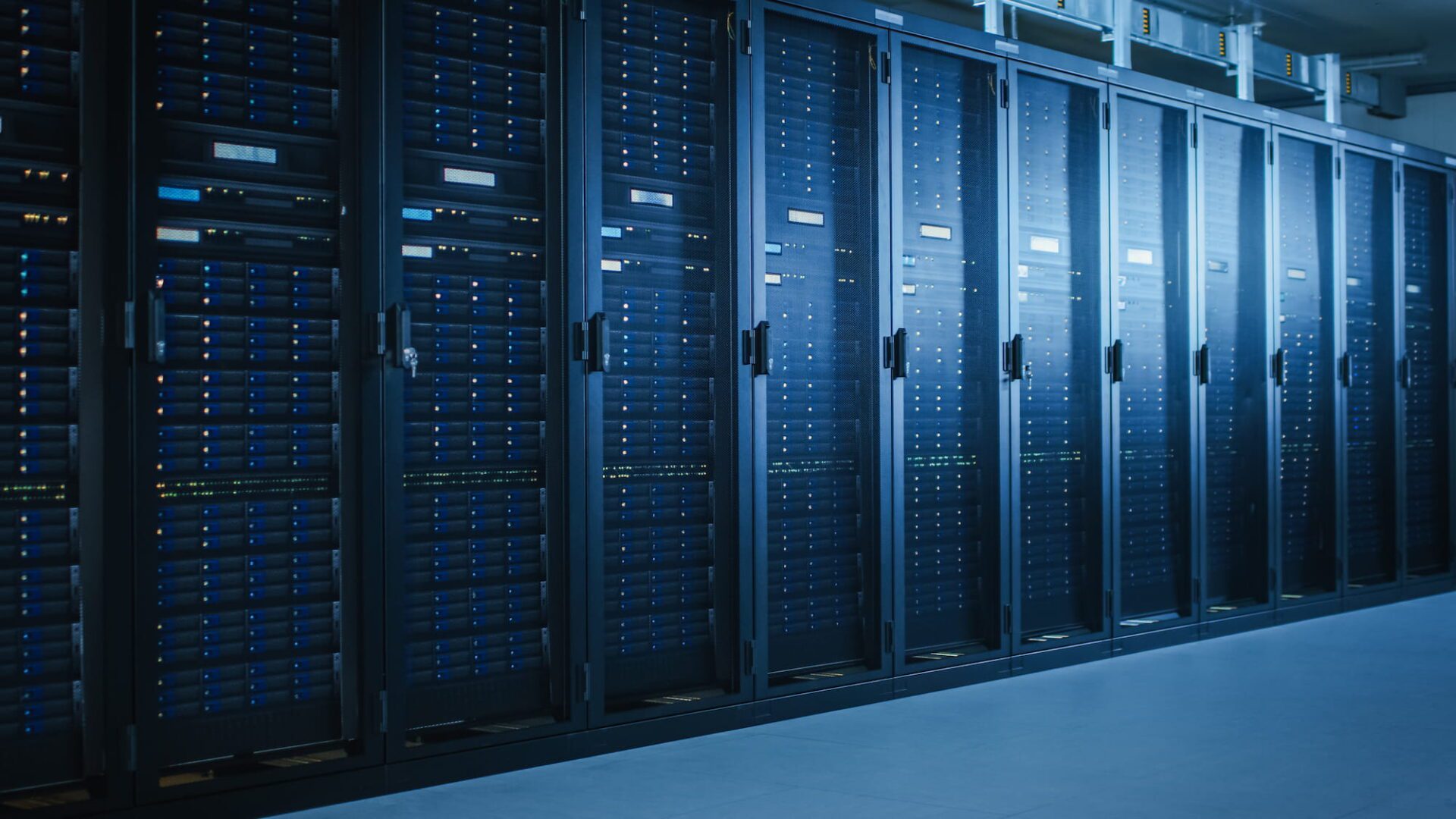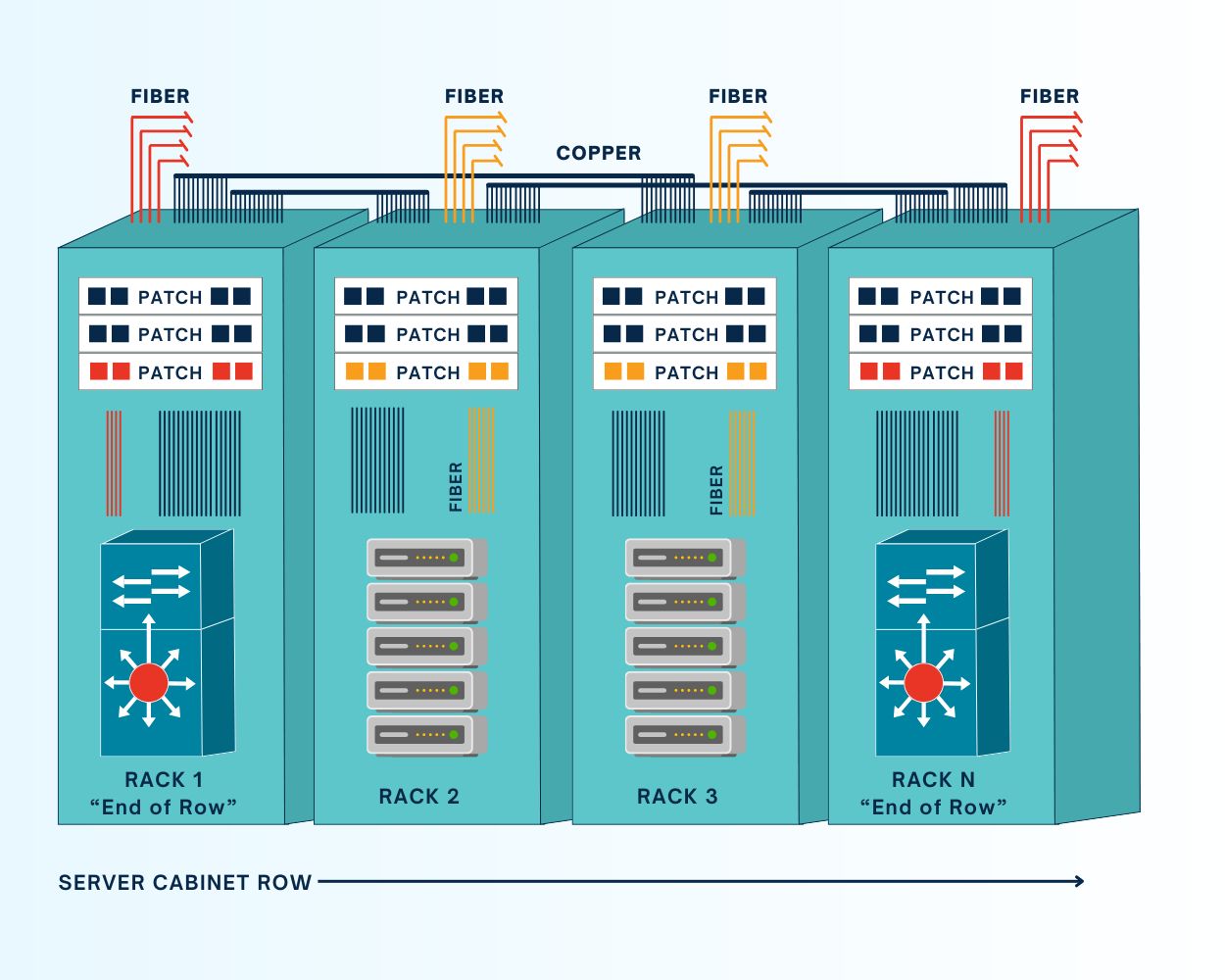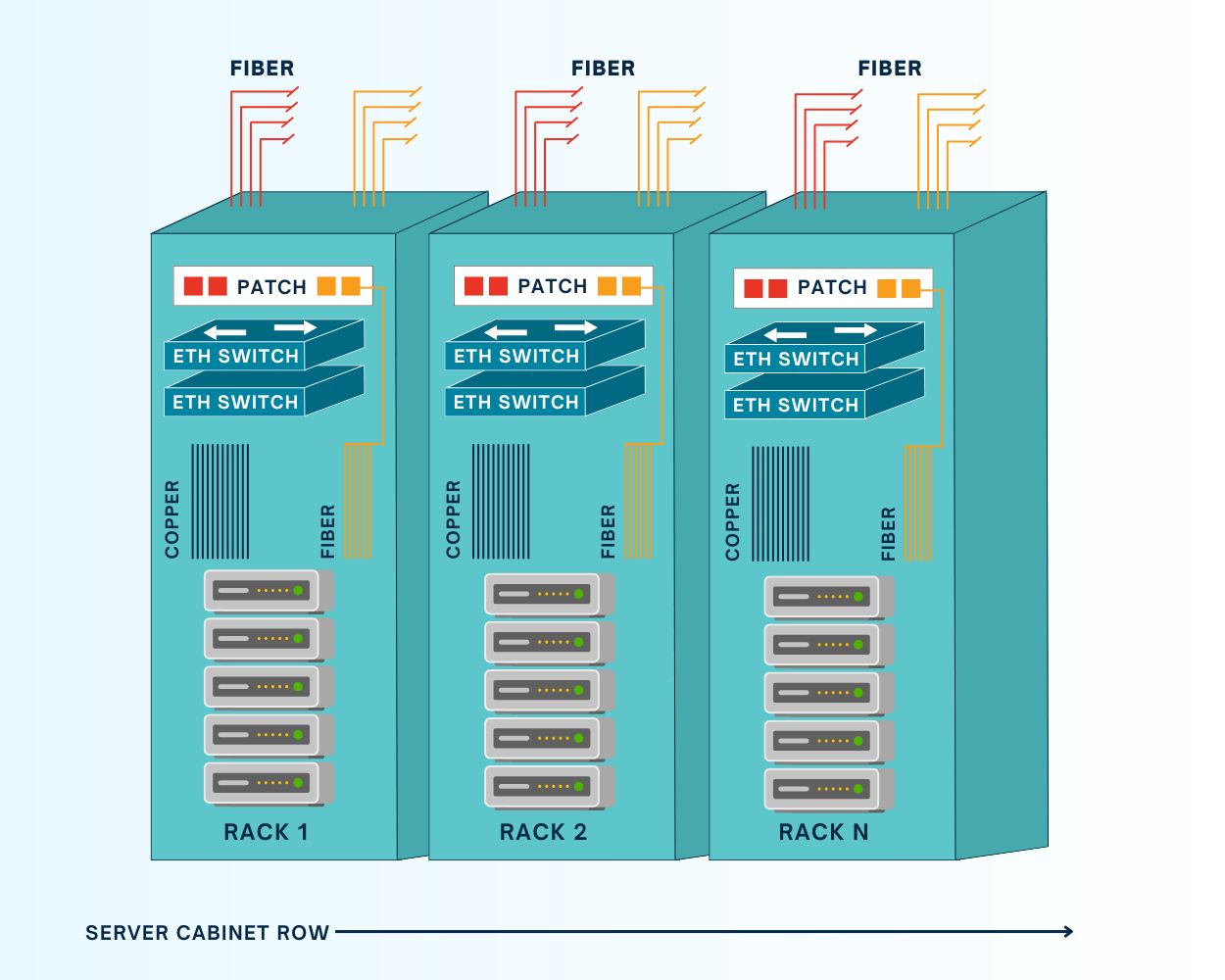End of Row vs Top of Rack Deployments

What is an end-of-row (EoR) deployment?

One of the main drawbacks of this architecture is that the EoR switch is a single point of failure for the entire row. If that switch fails due to a botched update, ransomware attack, or other adverse event, the whole row loses network access. Running cables from each cabinet to the EoR can also get messy very quickly, especially at scale. In the long run, it’s also a less flexible architecture that forces teams to consider an entire row of infrastructure every time they want to change or upgrade networking components.
What is a top-of-rack (ToR) deployment?

On the other hand, a ToR deployment requires more switches than an EoR deployment, which can increase costs and complexity. More switches equate to more power draw, and they add an extra network hop to local traffic that could possibly affect throughput. Each switch must also be monitored, secured, and regularly patched, potentially creating more work for infrastructure teams. As a result, ToR deployments are also more challenging to scale, as each new rack added to the data center requires an additional ToR switch.
Comparing end-of-row vs top-of-rack deployments: Which should you choose?
| End-of-Row | Top-of-Rack | |
|---|---|---|
| Number of switches | One or more per row | One or more per rack |
| Cable management | Requires patch cables running along the entire row | Keeps patch cables within the rack or cabinet |
| Cost | Fewer switches and lower power draw keeps costs down | More switches and higher power draw gets more expensive |
| Complexity | Fewer switches to secure, manage, and troubleshoot | More devices to manage |
| Ease of scaling | Can deploy an entire new row with only one networking cabinet | Each new rack requires one or more switches |
| Flexibility | Inflexible; networking changes affect entire row | Each rack is a modular unit that can be changed without affecting others |
| Resilience | EoR switch is a single point of failure for the entire row | One rack’s switch can go down without affecting any other racks |
Both EoR and ToR architectures have advantages and disadvantages, with neither being the clear-cut winner for every possible use case.
End-of-row deployments are more cost-effective and easier to manage and scale, so they’re often favored by smaller, leaner IT teams or, on the opposite end of the spectrum, very large (or hyperscale) data centers. For example, a large cloud provider might prefer EoR to cut down on the number of switches to purchase, deploy, and manage at their hubs.
Top-of-rack deployments are modular, flexible, and resilient, which makes them a great choice for DevOps teams that need the ability to add or change components at any time without affecting the entire architecture. For example, managed service providers might prefer ToR so they can easily customize or update one customer’s rack without worrying about how the changes will impact others.
How Nodegrid improves resilience for EoR and ToR deployments
Nodegrid serial console switches can be deployed top-of-rack or end-of-row to improve the resilience of either architecture. Nodegrid switches connect to the serial port on data center devices to provide out-of-band (OOB) management, allowing teams to remotely manage and troubleshoot DC equipment even when the primary network is down. They isolate the management interfaces for data center infrastructure, making them inaccessible to malware or malicious actors on the production network. Plus, Nodegrid also provides network failover to keep business-critical services running during adverse events.
Nodegrid serial consoles have an open architecture that can integrate and host other vendors’ software and virtualized network functions. That means a single Nodegrid box could theoretically replace an entire rack of networking hardware, streamlining EoR deployments and making ToR architectures more feasible for lean, budget-strapped IT teams. Plus, Nodegrid switches and all connected devices can be remotely managed from a single, on-premises or cloud-based software platform, significantly reducing management complexity for either deployment.
Reach out to ZPE Systems for more help comparing end-of-row vs. top-of-rack deployments or to see a demo of the Nodegrid platform in action.
